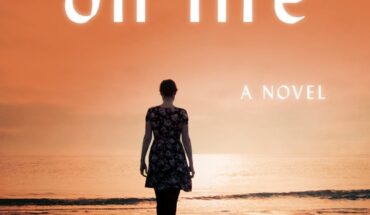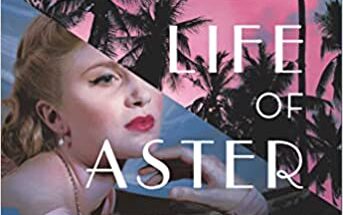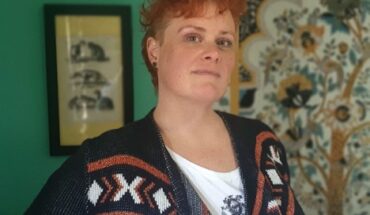 The central mystery of Katheen Alcalá’s Spirits of the Ordinary is this: how can a book have everything –breathtaking, living landscapes, gender-bending, gold fever, Indigenous wisdom without cliché or fetishization, Crypto-Jews, empowered women, and profound character arcs – yet still be so tightly, elegantly constructed?
The central mystery of Katheen Alcalá’s Spirits of the Ordinary is this: how can a book have everything –breathtaking, living landscapes, gender-bending, gold fever, Indigenous wisdom without cliché or fetishization, Crypto-Jews, empowered women, and profound character arcs – yet still be so tightly, elegantly constructed?
Originally published in 1997, Spirits of the Ordinary has just been reissued with a foreword by Rigoberto González. In the meanwhile, Alcalá has gone on to write two sequels, The Flower in the Skull and Treasures in Heaven, a collection of essays titled The Desert Remembers My Name, and, most recently, The Deepest Roots: Finding Food and Community on a Pacific Northwest Island. Because of her recent work around food and sustainability, I wanted to open our conversation by asking her about gardening.
Lise Brody: The garden plays so many roles in this novel. Is writing a novel like tending a garden? Are you bringing order to chaos?
Kathleen Alcalá: When I write, I don’t think of myself as a gardener. Writing a novel is largely a process of discovery for me. I know certain things about the topic when I start out, but all the discoveries along the way are very exciting to me and will take it in other directions. I suppose there’s a certain God-like quality to being a writer, in that you think you’ll finally get to express this idea, or have a character who does this, but they always wriggle away from me. They always do what they want to do.
I suppose in this way a garden is like a book: Julio and Mariana are in the same garden, at the same time, seeing completely different things – because isn’t that really how we live our lives? Each bringing a different understanding to our experiences than the people around us.
This novel was first published in 1997. What was it like to revisit it after all those years? Did you want to change anything? Was your relationship to it different?
I think my relationship to it is certainly different, especially in terms of family history. I know a lot more now than when I wrote it. At the time nobody else was writing about hidden Jews in Mexico, and it was pre-internet, so any research had to be done in person. I did my research in part in my uncle’s library in Chihuahua, Mexico, and talking to relatives. In the last twenty years everybody has written on the subject of hidden Jews. I discovered a group called the Society for Crypto-Judaic Studies shortly after I wrote this novel and started going to their conferences, and it’s been really interesting meeting a lot of scholars and people from the same backgrounds.
One of the things I discovered was that there were other people like us. I grew up thinking we were the only family with that background. In fact, a branch of the Inquisition came over to Mexico to execute people. I don’t know how directly it affected my family at that time, other than the fear that led to living one’s life in secrecy, even long after one would assume you’d be in any danger. I think it just becomes a habit.
I’m dying to know about your uncle’s library.
My uncle Francisco Cepeda was the director of a private school in Chihuahua for many years, and he had this wonderful room full of books. There’s a whole essay just about his library in The Desert Remembers My Name.
Did you change anything when the novel was reissued?
When they republished it, there were some vestiges of my early draft in the file, and there was one that we left in. It’s a little opening to one of the early chapters that describes the landscape – and of course landscape is as important a character in this book as the people. I had a wonderful editor at Chronicle Books, Jay Schaefer, so really there was very little to change.
Can we talk about borders? Political, religious, gender, earthly/heavenly realms–there’s not a boundary that doesn’t get crossed in this novel. It had to be hard to put so many crossings together in one book! What was it like to be in so many liminal spaces at once and to organize that into something coherent?
Well, I think I’ve always lived in a border space, which in Mexican culture is called Nepantla – neither here nor there, an in-between place – so that didn’t bother me at all. And perhaps because this is my first novel I didn’t have the constraints of “I have to conform to this, or I have to conform to that.” I’ve always read very widely – I’ll read Car and Driver if it’s a well written article – but I also read fantasy and science fiction, and was fortunate enough to study briefly with Ursula Le Guin, who taught in the Clarion West Science Fiction and Fantasy program here in Seattle. She never let those sorts of boundaries limit what she was going to write about. So I’ll take people like Le Guin, and people like Octavia Butler, who lived here for a couple of years before she passed away – I don’t know that they were setting out to break boundaries as much as this was their place in the world, and they understood that and went ahead and wrote about it.
So many characters in Spirits cross the gender line in one way or another. I’m curious about Corey. Why was it important to write Corey as a cross-dressing woman?
If she had been male she would never have noticed Membrillo and Manzana. They all recognized each other–that they were living this way, in this time and place, because it was the best way to be. Also, there is a fairly strong history of women disguising themselves as men to travel the West, not only for safety, but to fight. Women fought in the Mexican Revolution dressed as men. After the revolution some of these women never went back to wearing dresses and being subservient to men.
Even Estela transgresses gender norms in her way.
There’s more about Estela’s life in Treasures in Heaven. I had to write the third book because there was so much amazing history about the feminist movement in Mexico at that time. And because I had left Estela at that point, it was natural for her to join that movement.
I think gender ended up being a stronger theme than I had expected, just because there were such rigid expectations. In the time that this was set there was still a lot of echoing of what had happened in Europe with the Industrial Revolution and the philosophical discovery of the individual–this notion that you had a self that was separate from society. I think that did affect my grandfather and great grandfather, that they were making these choices as individuals and going against expectations.
Were Zacarías and Julio modeled after your grandfather and great grandfather?
No, Zacarías and his son, Gabriel, were. And probably my main source of information for this book were my grandfather’s journals – there’s a whole story of getting access to those journals.
If you read the next two novels you see how the story lines intersect. My second novel, The Flower in the Skull, is based on Gabriel’s wife, whose mother was Opata Indian from the Sonoran Desert. My great-grandmother was raped by an Irishman and my grandmother was the result, so she was half Irish and half Opata, and just after her fifteenth birthday she married my grandfather. They had thirteen children, two of whom died in infancy, and two who died in early adulthood of diabetes – just about the time when people learned to reproduce insulin. That was much tougher research because this is not a well-known tribe. I spent weeks at the Amerind Foundation in Arizona going through their library and pulling out every reference I could find to learn who these people were–I didn’t even know the name of our tribe until I was an adult–and then that one word, Opata, was all I had.
My grandfather became a Protestant minister. This was before religion became so politicized. You look at his work and you see what today would be considered a very left leaning practice of religion–it was all about social justice. Much of his ministry was based on the temperance movement because if they could get men to take their wages home to their family instead of spending it on drink, they could turn people’s lives around.
He, with his growing family, moved all over the Southwest and Northern Mexico, establishing churches. It was kind of off the radar, this notion of ministering to Mexicans along the border, but a lot of Crypto-Jewish families got caught up in it because it meant they could have direct access to the scriptures, to the Old Testament.
I also loved the crossing between the earthly and heavenly realms. Mariana lives partly in each, as do the twins, Manzana and Membrillo – and even Zacarías ends up moving between them. And Lucy, at the end.
At some point I was part of a writers group called Los Norteños here in the Northwest. We wrote a number of one-act plays, and the one I wrote was based on the characters of Lucy and Julio. They’re each doing their thing – Lucy’s doing her fortune-telling and Julio is fooling around with the Cabalistic and alchemical stuff that he probably ought not to be doing, and they essentially get their wires crossed and see each other. Now, I’m going to have two or three live Zoom events around this book pretty soon, and who would have thought when I wrote it – that’s exactly what we’re going to be doing: talking to each other across these invisible wires, these intersecting realms of being.
The desert landscape is so beautiful in this book.
It is beautiful.
I don’t know if this will help other writers or not, but when I sit down to write a new work, even a small one, I have to start by writing a description of the place I grew up in. I start with my very earliest memories of the San Bernardino Mountains, where I lived between the ages of one and six. I have to physically ground myself in that time and place, and then I can start thinking about the rest of the world, how other people think about things, what they want in their lives. But I return each time to that little place.
Water plays a tremendously important role in this book–as does the absence of water. There’s a gorgeous passage, just after somebody explains to Zacarías that the land where they sit was once ocean: “Zacarías suddenly saw the desert in a clear aqua light, the rocks, cliffs, grey-green vegetation submerged in a rippling sea. He imagined huge leviathans drifting purposefully past the cliffs on the other side of the canyon, and silent, deadly shapes coming nearer. Schools of flashing fish turned and darted as one entity through the long grass…”
It’s interesting that you would focus on that. I was hearing this morning about how we’re long past stopping global warming, and now we’re just talking about adjusting to it and trying to slow it down a little bit. But there have been people writing about this for some time, often in the realm of science fiction. Paolo Bacigalupi, who lives in western Washington, writes about water wars in the near future, and what it could really be like as the temperature warms up. Rebecca Roanhorse is an Indigenous writer who lives on or near the Navajo reservation and she writes really interesting things about our relationship with water. I think we really have to look at our relationship with the land right now.
A couple of poets I know write about love and water. Ofelia Zepeda, who’s Tohono O’odham, has published two collections of poetry, and yesterday I finished reading Postcolonial Love Poem by Natalie Diaz. It’s all about water, and it’s all about love. You see that with the desert poets–the metaphor is already there.
So when Zacarías sees the water that’s not there, he’s seeing the absence of love?
For him, it could be. He understands that there’s a flip side to everything. He’s lived his life really selfishly. He’s left his family struggling financially as he takes his supplies and goes off in the desert. In that moment, he starts to see the world in a different way, and I think that passage is necessary before he can go to Casas Grandes and have anything happen.
That’s why I think this book is so elegant.
Part of that is good editing. Because there are so many topics, it could have been a really messy book. I have read and reviewed books that were good, but they were thickets of ideas compiled into a book-length work. There might have been things that were let go in order to keep this book lean, but I think it works, and I think the fact that I broke it into three novels works as well because even though it’s told technically from several points of view, this book has a certain voice that would not have worked for the next two novels. So I see them as a trilogy, as three complementary books.
For writers reading this: what did you have to let go of?
I couldn’t really tell you at this point what specific things had to be let go. When I’m writing, everything is relevant to my current work, so I’m cutting articles out of the newspaper and I’m reading, and going, “Oh, I can put that in the book, or I can put that in the book…” So I have references to plant life, and to gardening, and to Cabalistic practice…
The publisher wanted to include only the First Canticle–and these are real canticles that I discovered and translated. I insisted that they had to do all of them because they tell a story in themselves. They were probably written by a man in Peru who spent many years in the Inquisitorial prison but would smuggle things out on avocado skins, little bits of paper, cloth… His work was widely circulated. I could have gone on more about that, but it would have been an aside.
Who are you reading now?
Last year my favorite book was called The Yellow House by Sarah Broom, which is an autobiographical work about the house she grew up in in New Orleans East. It’s written in such an extraordinary way. I look forward to more by her.
For historical fiction writers out there, how constrained do you feel by the need to get it right? How much do the details you learn offer helpful structure, as opposed to hemming you in?
I did so much research for Spirits of the Ordinary and the subsequent books that I got to a point where if I didn’t know something, I could sort of guess, and my guesses were accurate. Of all the research I did, I used probably twenty percent at most, but having done all that research gives me much more confidence.
I like writing about eras or people who aren’t quite as documented, since I write fiction. It gives me a lot more leeway as long as it fits within the parameters of what happened historically.
What are you working on now?
I’ve written a lot of short stories along the way–I guess I should try to organize them and publish them as collections sometime. I accidentally started two novels, which I didn’t mean to do. One is set in sort of an alternate reality, mostly in Mexico, and it’s called Los Voladores (The Flyers). It’s based on a ritual in which men tie a rope around their ankles, jump off the top of a pole, and fly around it. It’s amazing to watch. The other novel is set in 11th century Spain, and it’s about the last Taifa king of Seville, al-Mu’tamid ibn Abbad.
I have to read that book!
Oh good. That’s one reader.
Kathleen Alcalá is the author of six books of fiction and nonfiction. Her work has received the Western States Book Award, the Governor’s Writers Award, and a Pacific Northwest Booksellers Association Book Award. She received her second Artist Trust Fellowship in 2008, and in 2014 was honored by the national Latino writers group, Con Tinta. She has been designated an Island Treasure in the Arts on Bainbridge Island.




1 comment